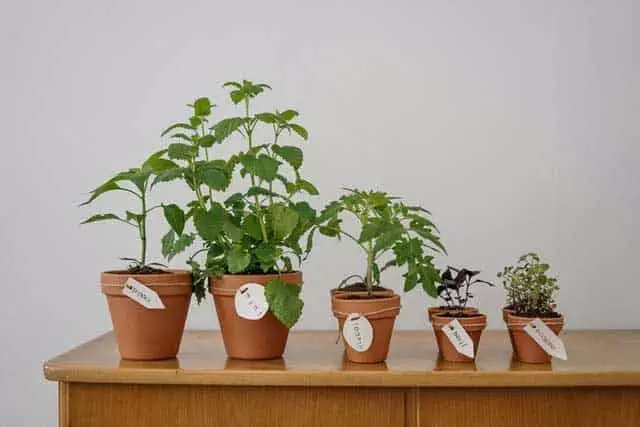Table of Contents
Looking for some advice on growing a self-sufficient garden but unsure where to start? Look no more – just keep on reading
To start growing your food, you don’t have to be in a zombie apocalypse. The last three years of the pandemic taught us that. During those three years, many people turned to gardening because of food shortages, lack of money, and a need for a new hobby. Of course, one small garden can’t be your entire food source, but it is still much better than having nothing. Thus, consider growing a self-sufficient garden if you have even one small piece of land. This way, you can stop relying on commercial food chains, save money, improve our planet’s health, and most importantly, improve your health. If we persuaded you, great! Here is our guide to growing a self-sufficient garden.
Choose Your Garden’s Location Wisely
Okay, let us start with the basics – choosing your garden location. If you are following all the gardening trends, you probably know that location is what can make or break your garden. For instance, if you start growing a self-sufficient garden somewhere in the shade and where there is a lot of wind, nothing will grow (not even weeds!). Your garden needs sun! And, it needs to be hidden from terrible weather conditions. Moreover, your soil must be healthy to have a healthy garden. So, be sure to have it checked and, if necessary, fertilized before planting anything.
What if You Have a Tiny Garden Space?
Believe it or not – you can be growing a self-sufficient garden on your patio or even on your balcony. You don’t have to plant your fruits, vegetables, herbs, etc., in your yard. You can plant them anywhere! For instance, you can buy vegetable patches, grow boxes, or even tiny greenhouses. Or, you can purchase big pots and plant certain fruits and vegetables. The only thing you need to be is creative.
Planting your plants and vegetables in pots is helpful if you have to move too! Professional movers you can find on bestmoversnyc.com will gladly move your potted plants, but not those you just removed from your garden. Thus, if you are constantly on the move, this way of growing a self-sufficient garden might be your best option.

Be Selective With Your Plants
It is essential to understand that not all fruits, vegetables, and herbs will grow just anywhere. Even if you use the best gardening tools, and even if you fertilize the land, you will not be able to succeed. This is because different types of plants require different conditions. For instance, some plants love the sun while others hate it. Some prefer to grow in moist soil, while others thrive in a dry one. Thus, before you start developing your self-sufficient garden, be sure to know what types of plants will be suitable for your location. However, certain plants will grow just anywhere. And, they are great for feeding us! Those are, for instance, potatoes, tomatoes, corn, beans, cabbage, lettuce, etc. Moreover, if you are starting to grow your garden, that is, if you don’t have experience with it, it would be a good idea to start with herbs. Herbs are the easiest and the fastest plants to grow, requiring little care to thrive.
Consider Buying Water Butts
Water butts can be an excellent solution for growing a self-sufficient garden if you live somewhere with a lot of rainfall. Water butts are an old-fashioned way of collecting rainwater and using it for drinking, or in our case, for watering plants. So, if you have them ‘installed’ in your yard, you will not have to rely on grid services as much.
Another great advantage of having water butts is that you can put them just anywhere and use them for watering both plants in your big yard and plants on your small balcony. So, give this old invention a thought!
As previously mentioned, there is a list of things that movers won’t relocate – and certain plants are on that list, so be sure to check them out. This applies primarily to plants in your garden and rarely to plants in your pots. But, this can also apply to water butts that have a built-in place for planting. If you are constantly moving, don’t buy this water butt – instead, get one that only collects water.

Start Composting
Growing a self-sufficient garden is one step closer to living more sustainably. And, what can be more sustainable than composting? Nothing! Thus, don’t throw away the scraps when you eat your freshly grown fruits, vegetables, and herbs. Instead, consider putting them in your compost bin! By doing this, you will not only reduce your waste (and thus, help save the planet) but also create your organic soil fertilizer. You will be surprised at how much your plants will thrive from this. Moreover, you can use this hand-made fertilizer for flowers that enhance the beauty of your home garden too!
Other Things to Do to Be More Self-Sufficient
If you love having a self-sufficient garden, you will probably love having a self-reliant life. Here are some of the many ways it can benefit you:
- Live a healthier life
- Save a lot of money
- Sleep well, knowing that you are helping our planet
Thus, besides growing your self-sufficient garden, consider having some chickens and bees, for instance. Or, consider adding a couple of solar panels or wind turbines. Do your research on how to be more self-sufficient and sustainable, and you might find something that works for you. As you have seen, growing a self-sufficient garden doesn’t have to be complicated. You only have to pick up some tips and tricks before starting. Give our advice some thought too! We are sure it can help you grow your self-sufficient garden and help you live more sustainably.


